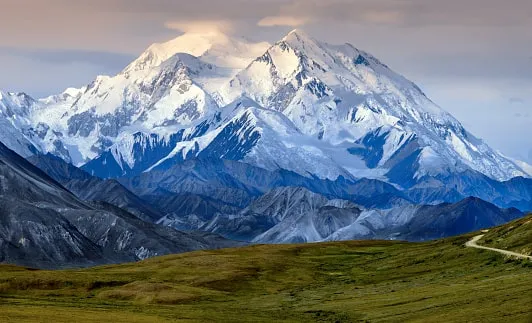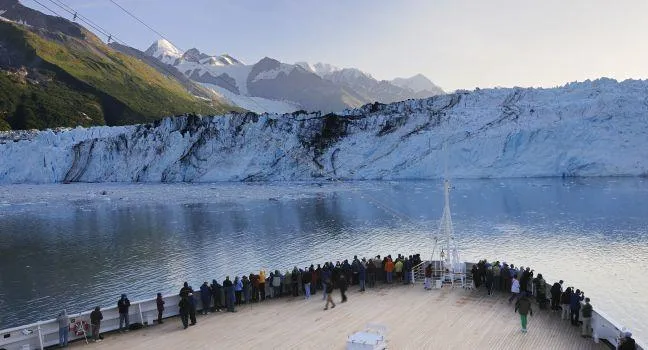Alaska, the vast and wild land of North America, is not only famous for its magnificent natural landscapes but also harbors a long and fascinating history of trade. From ancient times, before Europeans set foot here, indigenous peoples had established extensive trade networks, turning icy trails into economic and cultural arteries. A journey to explore Alaska is incomplete without discovering the vestiges of these ancient trade routes, places that mark the resilience, creativity, and spirit of exchange of its people.
Early Footprints: Indigenous Trade Routes
Before the arrival of the Russians and Europeans, Alaska was home to numerous indigenous tribes with rich cultures and developed trading systems. Trails formed thousands of years ago primarily served the exchange of goods between tribes, from the coast to the interior, from north to south.

The main items traded were natural products: animal hides, furs, fish, seal oil, mammoth ivory, copper, and precious stones. The primary means of transportation were walking, kayaks, umiaks (large skin boats), and sled dogs in winter. This trade network was not just about exchanging goods but also a cultural bridge, helping tribes share knowledge, skills, and maintain peaceful relationships.
One of the most famous routes, the precursor to today’s Iditarod Trail, was used by the Yup’ik and Athabascan people to trade between the coastal and interior regions of Alaska. This route served not only economic purposes but was also a vital communication line, especially during harsh winters.
Russian Influence: Expanding Trade Networks
The arrival of the Russians in the 18th century marked a major turning point in Alaska’s trade history. Driven by the goal of exploiting fur resources, the Russians established trading posts along the coast and gradually expanded inland. Sea routes became busier with ships carrying beaver pelts, sea otter furs, and other valuable furs to Europe and Asia.

Sitka (New Archangel) became the main Russian trading center in North America, a hub for goods and the starting point for expeditions. The Russians also built trails and waystations to facilitate the transportation of goods and maintain control over the vast territory. However, this expansion also caused conflicts with indigenous tribes, leading to profound changes in their economic and social lives.
The Gold Rush and the Explosive Growth of Routes
The Klondike Gold Rush in the late 19th century revolutionized transportation and trade in Alaska. Thousands of people flocked to Alaska hoping to strike it rich, causing a surge in demand for transporting goods, food, and mining equipment. Old routes became overloaded, and new routes were hastily constructed to meet this urgent need.
Klondike Gold Rush National Historical Park, preserving the marks of a vibrant trading era and arduous trails.
Skagway and Dyea became the main gateways for gold seekers heading to Klondike. The Chilkoot Trail and White Pass, despite being treacherous, became the most famous overland routes of this period. Streams of people and supplies were transported along these trails, creating an unprecedented scene in Alaska’s history.
To meet the growing transportation needs, the Alaska Railroad was established in the early 20th century. This railway connected key economic centers like Anchorage, Seward, and Fairbanks, creating a more modern and efficient transportation system. The Alaska Railroad not only served to transport goods but also played a crucial role in developing tourism and connecting remote communities.
The Iditarod Trail: From Trade Route to Cultural Icon
The Iditarod Trail, originally a network of trails used by indigenous people, has undergone many historical stages and transformations to become a cultural icon of Alaska. During the Gold Rush, the Iditarod became a vital route for transporting goods and mail to inland gold mining areas. Later, it continued to be used for various purposes, including transporting medicine and supplies during the 1925 diphtheria epidemic, when sled dogs played a life-saving role.

Today, the Iditarod Trail is best known for the Iditarod Trail Sled Dog Race, a grueling and challenging sporting event that attracts worldwide attention. This race is not just a competition but also a tribute to Alaska’s history and culture, reminding us of the vital role of sled dogs and ancient trails in the development of this land.
Legacy of Ancient Trade Routes in Modern Tourism
Today, traces of ancient trade routes are still present in many famous tourist destinations in Alaska. Denali National Park, Glacier Bay National Park, Klondike Gold Rush National Historical Park, and the Alaska Railroad are not only attractive destinations for their natural beauty but also cultural and historical legacies, telling the story of ancient trade routes.
Visitors can experience the Alaska Railroad to admire the majestic scenery and visualize the role of the railway in connecting this vast land. At Klondike Gold Rush National Historical Park, visitors can walk on the trails that gold seekers once trod, explore historic towns, and learn about the harsh but passionate life of the Gold Rush era.
The ancient trade routes in Alaska are not just trails on a map but living pages of history, telling the story of cultural exchange, the spirit of exploration, and human adaptability in the face of harsh nature. Exploring Alaska is exploring the invaluable history and heritage of the trade routes that shaped this land.
Conclusion
The history of ancient trade routes in Alaska is a long and eventful journey, from the first steps of indigenous people, through the Russian influence, to the Gold Rush and the development of modern transportation systems. These routes played a crucial role not only in the economy but also as cultural bridges, contributing to the unique identity of Alaska. Today, when visitors come to Alaska, they not only admire the magnificent natural beauty but also have the opportunity to discover and appreciate the invaluable historical heritage of ancient trade routes, the arteries that have nurtured and developed this land over centuries.